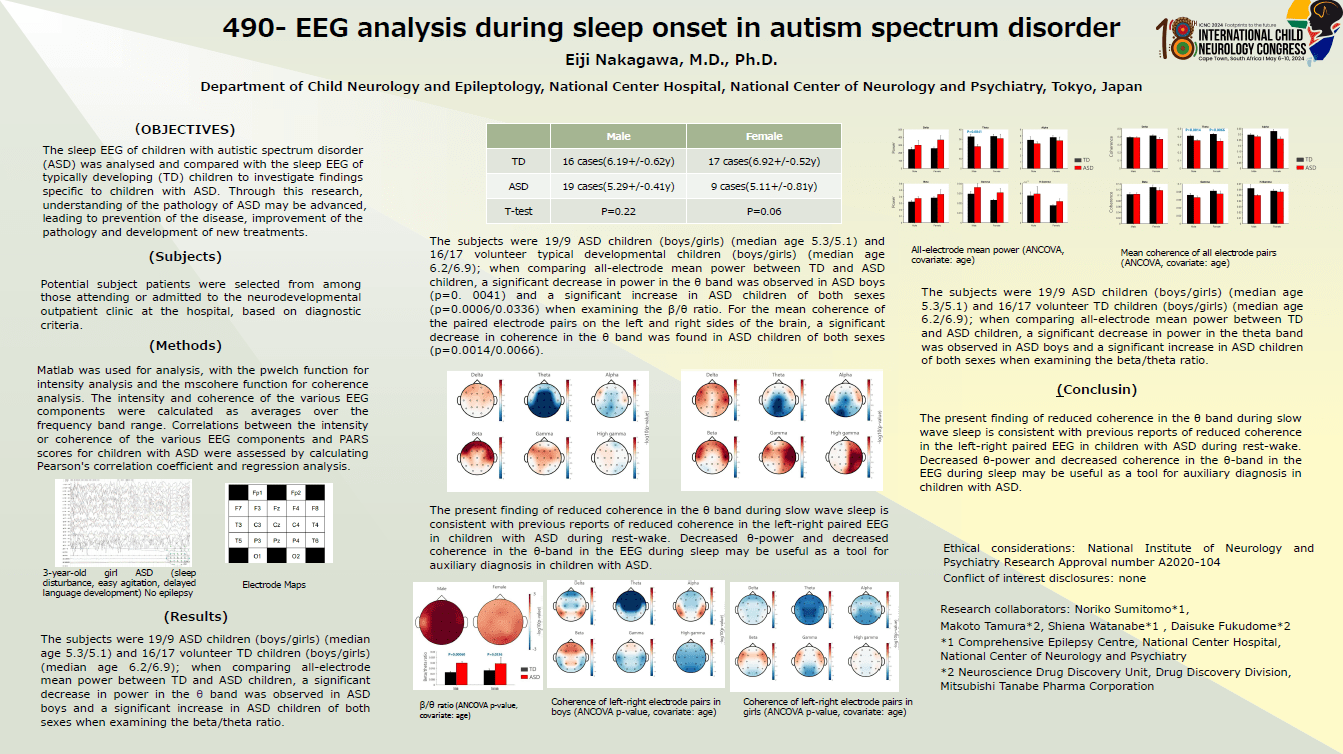EEG Analysis During Sleep Onset In Autism Spectrum Disorder
(Introduction) The sleep EEG of children with autistic spectrum disorder (ASD) was analysed and compared with the sleep EEG of typically developing (TD) children to investigate findings specific to children with ASD. Through this research, understanding of the pathology of ASD may be advanced, leading to prevention of the disease, improvement of the pathology and development of new treatments. (Subjects) Subjects were selected from among the neurodevelopmental outpatient clinic at the hospital, based on diagnostic criteria. (Methods) The intensity and coherence of the various EEG components were calculated as averages over the frequency band range. Correlations between the intensity or coherence of the various EEG components and PARS scores for children with ASD were assessed by calculating Pearson's correlation coefficient and regression analysis. (Results) The subjects were 19/9 ASD children (boys/girls) (median age 5.3/5.1) and 16/17 volunteer TD children (boys/girls) (median age 6.2/6.9); when comparing all-electrode mean power between TD and ASD children, a significant decrease in power in the theta band was observed in ASD boys and a significant increase in ASD children of both sexes when examining the beta/theta ratio. (Discussion) The present finding of reduced coherence in the θ band during slow wave sleep is consistent with previous reports of reduced coherence in the left-right paired EEG in children with ASD during rest-wake. Decreased theta-power and decreased coherence in the theta-band in the EEG during sleep may be useful as a tool for auxiliary diagnosis in children with ASD.
Eiji Nakagawa
National Center Hospital, National Center of Neurology and Psychiatry
Japan

Eiji Nakagawa
National Center Hospital, National Center of Neurology and Psychiatry
Japan